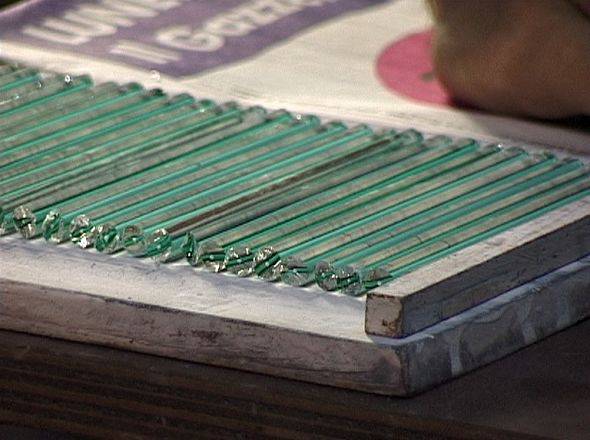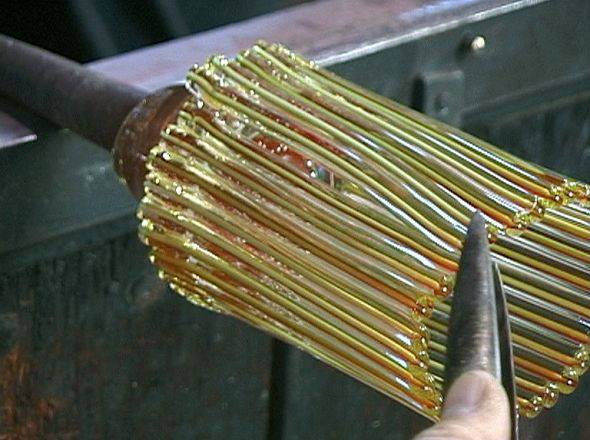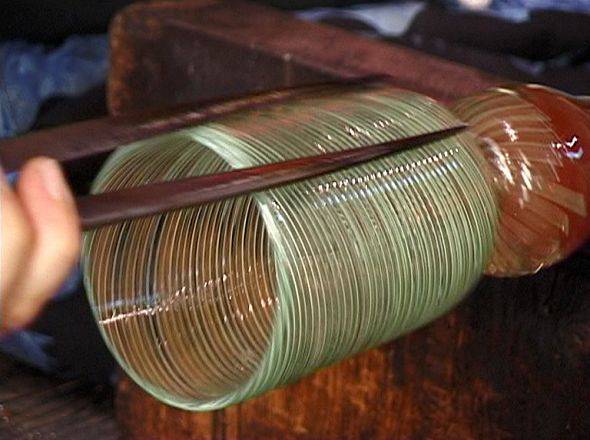Description
This technique was invented in Murano between the 2nd and 3rd decade of the 16th century.
The glassworker stretches a glass rod with a straight line, which is generally opaque, coloured white on the inside covered with transparent glass, mainly uncoloured.
The rods which are cut into same-length segments are laid parallel to each other on a metal surface covered with refractory clay or on a ceramic slab, then inserted repeatedly in the furnace to fire-join the pipes in one single one.
The craftsman picks up the glass slab formed by the rods with a blow pipe by rolling a conical object which had been laid at the edge of the pipe itself, along the longest side of the rectangle, which is the edge of the rod. So the end product is a cylinder, which is closed at the opposite edges to the blow pipe. With a rotating action of the pipe and the object being worked which is stuck to it, the glassmaker forms a spiral pattern with the rods which consists of the glass wall and thus also the inside decorative threads. He can then blow and shape the object.



